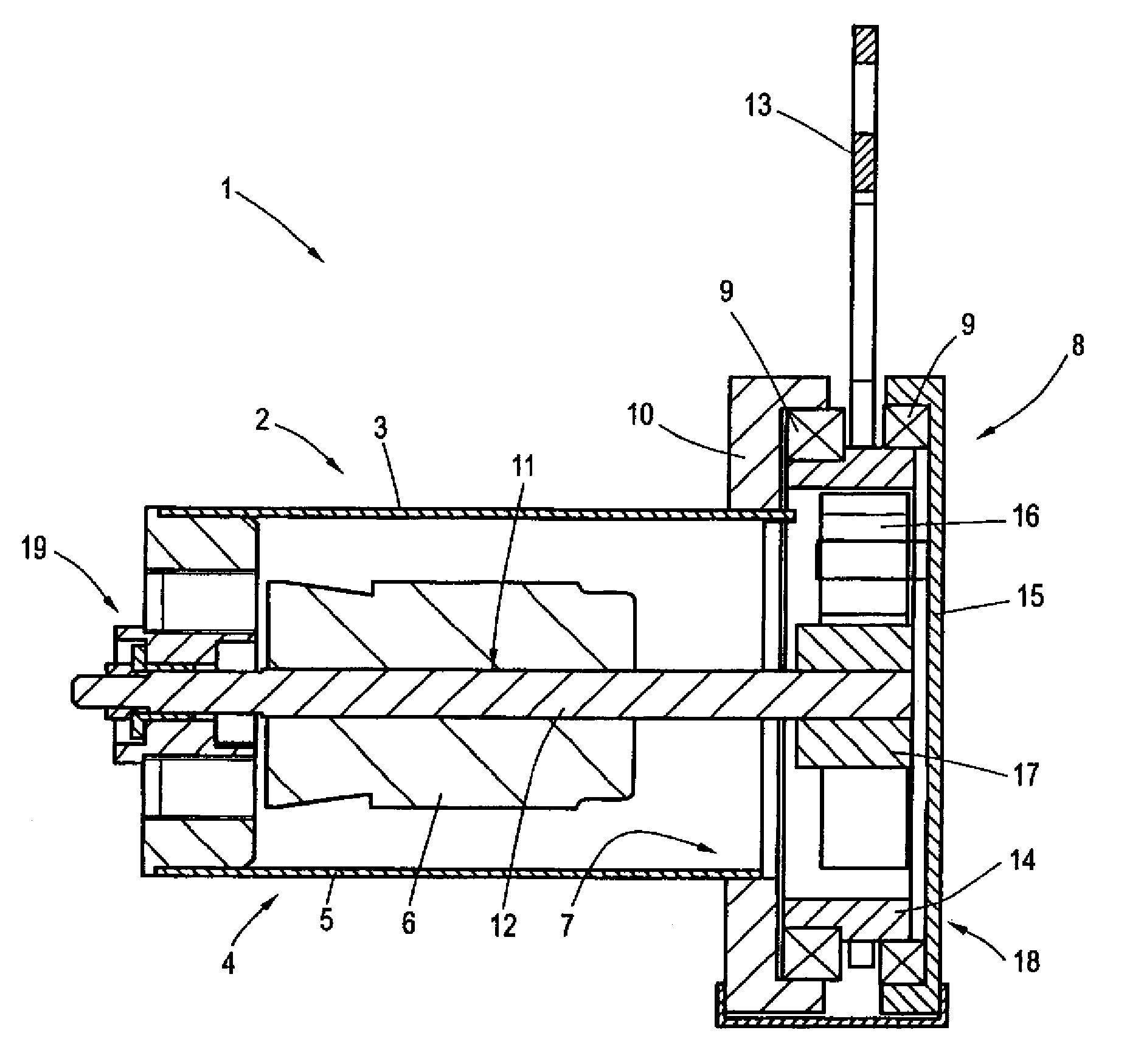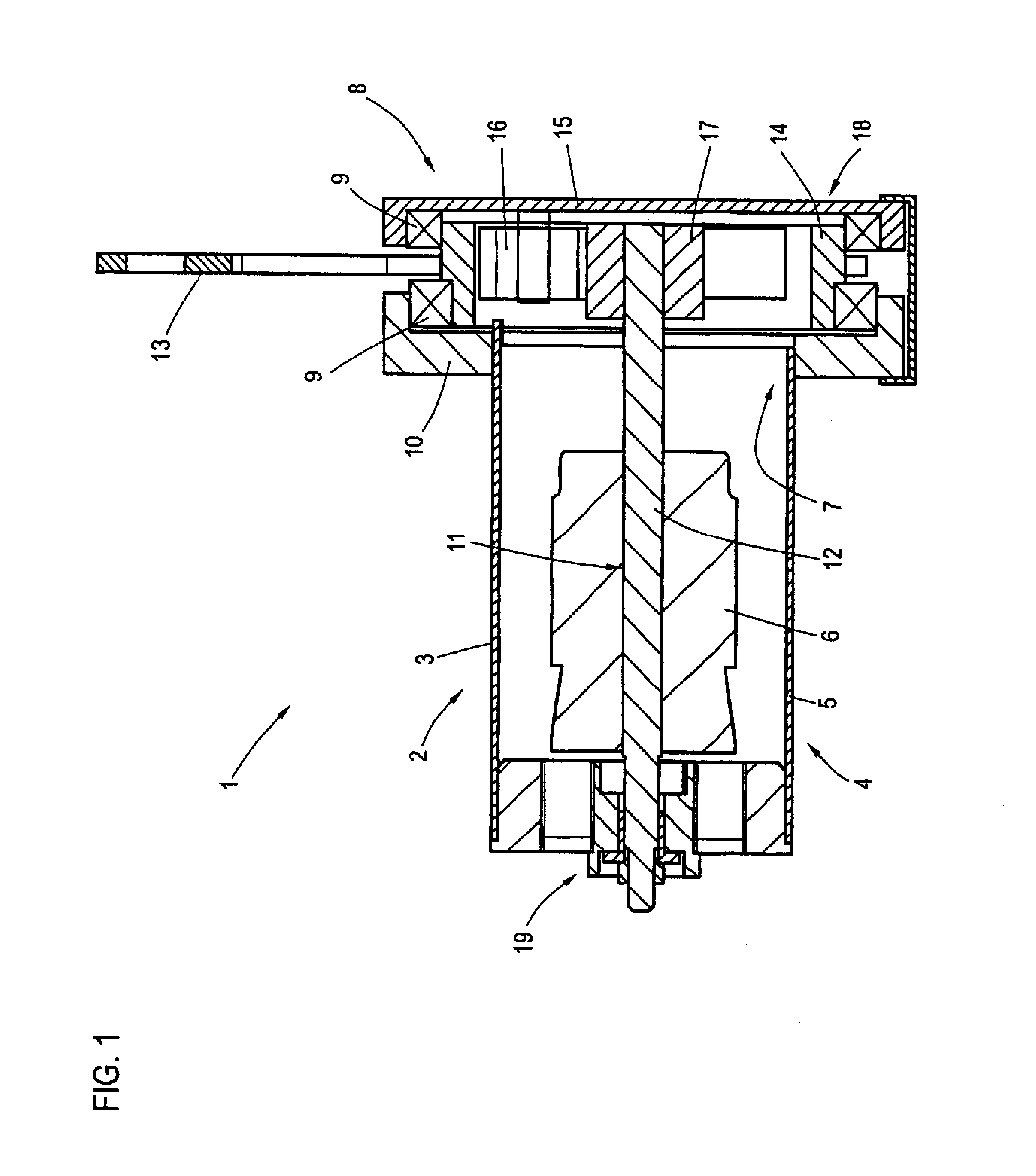Electric damper
a damper and electric technology, applied in the field of electric dampers, can solve the problems of inability to recover or render useable energy drawn from the system, and the structure design of electric dampers known in the art is relatively complex
- Summary
- Abstract
- Description
- Claims
- Application Information
AI Technical Summary
Benefits of technology
Problems solved by technology
Method used
Image
Examples
Embodiment Construction
[0029]FIG. 1 shows a basic illustration of an electric damper 1 for damping a relative movement between first and second masses (both not shown) according to an exemplary embodiment of the invention. The damper 1 includes a generator 2 driven by the mass movement and having a fixed stator 5 integrated in an inner housing wall of a first housing portion 4 of a hollow-cylindrical housing 3, and a cylindrical rotor 6 rotatable in relation thereto. The housing 3 is connected via a second housing portion 7 to a gear mechanism 8 which is coupled with the generator 2 and configured by way of example as planetary gear train. As described above, other types of gear mechanisms are, of course, also conceivable within the scope of the invention, in addition to the configuration of the gear mechanism 8 as planetary gear train.
[0030]The housing 3 is, for example, non-rotatably arranged to a vehicle structure, optionally via the intervention of elastomeric bearings (not shown). The attachment to t...
PUM
 Login to View More
Login to View More Abstract
Description
Claims
Application Information
 Login to View More
Login to View More - R&D
- Intellectual Property
- Life Sciences
- Materials
- Tech Scout
- Unparalleled Data Quality
- Higher Quality Content
- 60% Fewer Hallucinations
Browse by: Latest US Patents, China's latest patents, Technical Efficacy Thesaurus, Application Domain, Technology Topic, Popular Technical Reports.
© 2025 PatSnap. All rights reserved.Legal|Privacy policy|Modern Slavery Act Transparency Statement|Sitemap|About US| Contact US: help@patsnap.com



